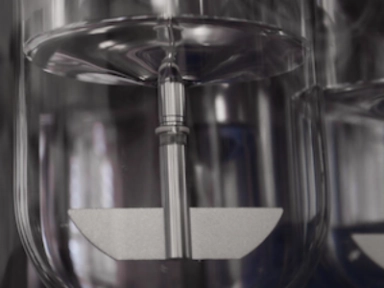Odyssey outcomes - CVOT mortality sub-analysis
Effect of Alirocumab on mortality after Acute Coronary Syndrome. An analysis of the Odyssey Outcomes randomized clinical trial.
Philippe Gabriel Steg, Michael Szarek, Deepak L. Bhatt, Vera A. Bittner, Marie-France Brégeault, Anthony J. Dalby, Rafael Diaz, Jay M. Edelberg, Shaun G. Goodman, Corinne Hanotin, Robert A. Harrington, J. Wouter Jukema, Guillaume Lecorps, Kenneth W. Mahaffey, Angèle Moryusef, Petr Ostadal, Alexander Parkhomenko, Robert Pordy, Matthew T. Roe, Pierluigi Tricoci, Robert Vogel, Harvey D. White, Andreas M. Zeiher, Gregory G. Schwartz, For the Odyssey Outcomes Committees and Investigators
Objective
To better understand the effects of alirocumab on death, this report describes all-cause, cardiovascular, and non-cardiovascular death in participants eligible for ≥3 years of follow-up, the interaction of treatment and baseline LDL-C on death, and the association between nonfatal cardiovascular events and non-cardiovascular death.
Methods
ODYSSEY OUTCOMES (Evaluation of Cardiovascular Outcomes After an Acute Coronary Syndrome During Treatment With Alirocumab) was a double-blind, randomized comparison of alirocumab or placebo in 18 924 patients who had an ACS 1 to 12 months previously and elevated atherogenic lipoproteins despite intensive statin therapy. Patients were aged ≥40 years with an ACS 1–12months before randomization. Qualifying patients had persistent dyslipidemia [LDL-C≥ 70mg/dL (1.81mmol/L), non high-density lipoprotein cholesterol (non-HDL-C) ≥ 100mg/dL (2.59mmol/L), or apolipoprotein B≥ 80mg/dL despite treatment with atorvastatin 40–80 mg daily, rosuvastatin 20–40mg daily, or the maximum-tolerated dose of one of these statins.
Participants were randomly assigned (1:1) to receive alirocumab 75mg or matching placebo subcutaneously every 2weeks.
Endpoints
The primary end point was the composite of death caused by CHD, nonfatal myocardial infarction, ischemic stroke, or unstable angina requiring hospitalization. To control for multiplicity, secondary end points were analyzed in the following prespecified hierarchical sequence to preserve type I error: any CHD event; major CHD event; any cardiovascular event; the composite of all-cause death, nonfatal myocardial infarction, or ischemic stroke; CHD death; cardiovascular death; and all-cause death.
Results
Median follow-up was 2.8 (interquartile range, 2.3–3.4) years. Premature treatment discontinuation for reasons other than death or blind switch to placebo because of low LDL-C levels occurred in 1343 (14.2%) patients receiving alirocumab and 1496 (15.8%) patients receiving placebo.
Death occurred in 334 (3.5%) and 392 (4.1%) patients, respectively, in the alirocumab and placebo groups (hazard ratio [HR], 0.85; 95% CI, 0.73 to 0.98; P=0.03, nominal P value). This resulted from nonsignificantly fewer cardiovascular (240 [2.5%] vs 271 [2.9%]; HR, 0.88; 95% CI, 0.74 to 1.05; P=0.15) and non-cardiovascular (94 [1.0%] vs 121 [1.3%]; HR, 0.77; 95% CI, 0.59 to 1.01; P=0.06) deaths with alirocumab. In a prespecified analysis of 8242 patients eligible for ≥3 years follow-up, alirocumab reduced death (HR, 0.78; 95% CI, 0.65 to 0.94; P=0.01). Patients with nonfatal cardiovascular events were at increased risk for cardiovascular and non-cardiovascular deaths (P<0.0001 for the associations). Alirocumab reduced total nonfatal cardiovascular events (P<0.001) and thereby may have attenuated the number of cardiovascular and non-cardiovascular deaths. A post hoc analysis found that, compared to patients with lower LDL-C, patients with baseline LDL-C ≥100 mg/dL (2.59 mmol/L) had a greater absolute risk of death and a larger mortality benefit from alirocumab (HR, 0.71; 95% CI, 0.56 to 0.90; P interaction=0.007). In the alirocumab group, all-cause death declined with achieved LDL-C at 4 months of treatment, to a level of approximately 30 mg/dL (adjusted P=0.017 for linear trend).
Conclusion
Alirocumab added to intensive statin therapy has the potential to reduce death after acute coronary syndrome, particularly if treatment is maintained for ≥3 years, if baseline LDL-C is ≥100 mg/dL, or if achieved LDL-C is low.
- Steg, P.G., Szarek, M., Bhatt, D.L., Bittner, V.A., Bregeault, M.F., Dalby, A.J., Diaz, R., Edelberg, J.M., Goodman, S.G., Ha References: notin, C. and Harrington, R.A., 2019. Effect of alirocumab on mortality after acute coronary syndromes: an analysis of the ODYSSEY OUTCOMES randomized clinical trial. Circulation, 140(2), pp.103-112.




